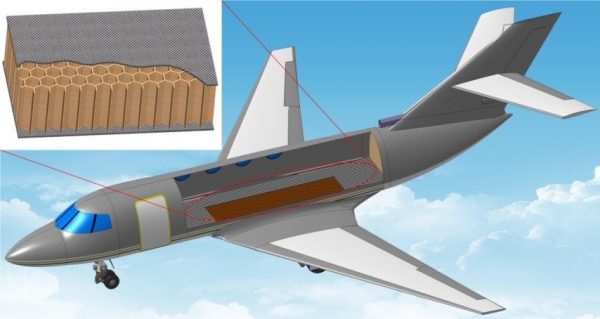
- This event has passed.
MAE PhD Defense – Ni Sui
July 21, 2017 @ 10:00 am - 12:00 pm
TITLE: Sound-Proof Sandwich Panel Design via Metamaterial Concept
DATE: Friday, July 21, 2017
TIME & LOCATION: 10 AM EB3 – 3115
ABSTRACT:
Sandwich panels, which feature hollow cells (typically in hexagonal shape) and two high-modulus laminate sheets bonded on top and bottom sides have been widely used in constructing lightweight yet strong structures. The honeycomb sandwich panels are well known to process not only lightweight but high stiffness-to-weight ratio. However, such panels are notorious for the poor acoustic performance at low frequencies due to their lightweight structures. In this thesis, two sound-proof sandwich panels were designed and the major mechanism can be categorized into two groups via metamaterial concept.
Inspired by recent development of no-mass-attached membrane-type acoustic metamaterials as low frequency sound blocking materials, a lightweight yet sound-proof honeycomb acoustic metamaterial was designed, theoretically studied and experimentally validated in the first part. The mechanical properties of the honeycomb core have been studied. By attaching a membrane on top of each honeycomb core, the sound transmission loss can be extraordinarily improved particularly in low frequency region below the first resonant frequency of the membrane with minimum weight-penalty. The negative dynamic effective mass density and impedance match between the honeycomb metamaterial and the air were presented to illustrate the phenomena. The sandwich panel which incorporates the honeycomb metamateiral as the core material yields a STL that is consistently greater than 50 dB at low frequencies. Furthermore, the glass fiber reinforcement has excellent sound absorbing performance at high frequencies without adding too much mass. The stiffness of the grid-like frame effect and the size of the panel were also studied.
In the second part, a perfect sound absorbing panel with coupled Helmholtz resonators was theoretically and numerically designed. Each unit cell of sandwich panels can be used as a Helmholtz resonator by perforating a small hole on the top face sheet. Two types of panels were introduced including a single Helmholtz resonator as a unit cell and the dual Helmholtz resonators as a unit cell with different orifices. The proposed Helmholtz resonators based sound absorbing panel was modeled as a semi-infinite space bounded by a rigid panel with only one unit cell. The relationship of the pressures induced by a plane wave incidence can be derived by solving Kirchhoff-Helmholtz integral by using the Green’s function. The thermal-viscous energy dissipation at the thermal boundary layer dominates the total energy consumed. The sound can be completely absorbed at resonance where the surface impedance of Helmholtz resonators must match the air impedance. Two HRs coupled with each other can be solved by mutual impedance with respect to the radiation property. Moreover, the coupled HRs can induce different hybrid modes that can achieve broadband sound absorption.
BIOGRAPHY:
Ni Sui earned her bachelor’s degree in automotive engineering at Jiangsu University in China in 2009. After graduation, she was directly admitted to continue her master’s program without examination in automotive engineering in the same university and worked on noise control of a mini-electric car for three years. In 2012, she began her studies as a PhD student in Mechanical Engineering at North Carolina State University under Dr. Fuh-Gwo Yuan and Dr. Yun Jing. She conducted research on acoustic metamaterials, noise control, and acoustic sandwich panels.

